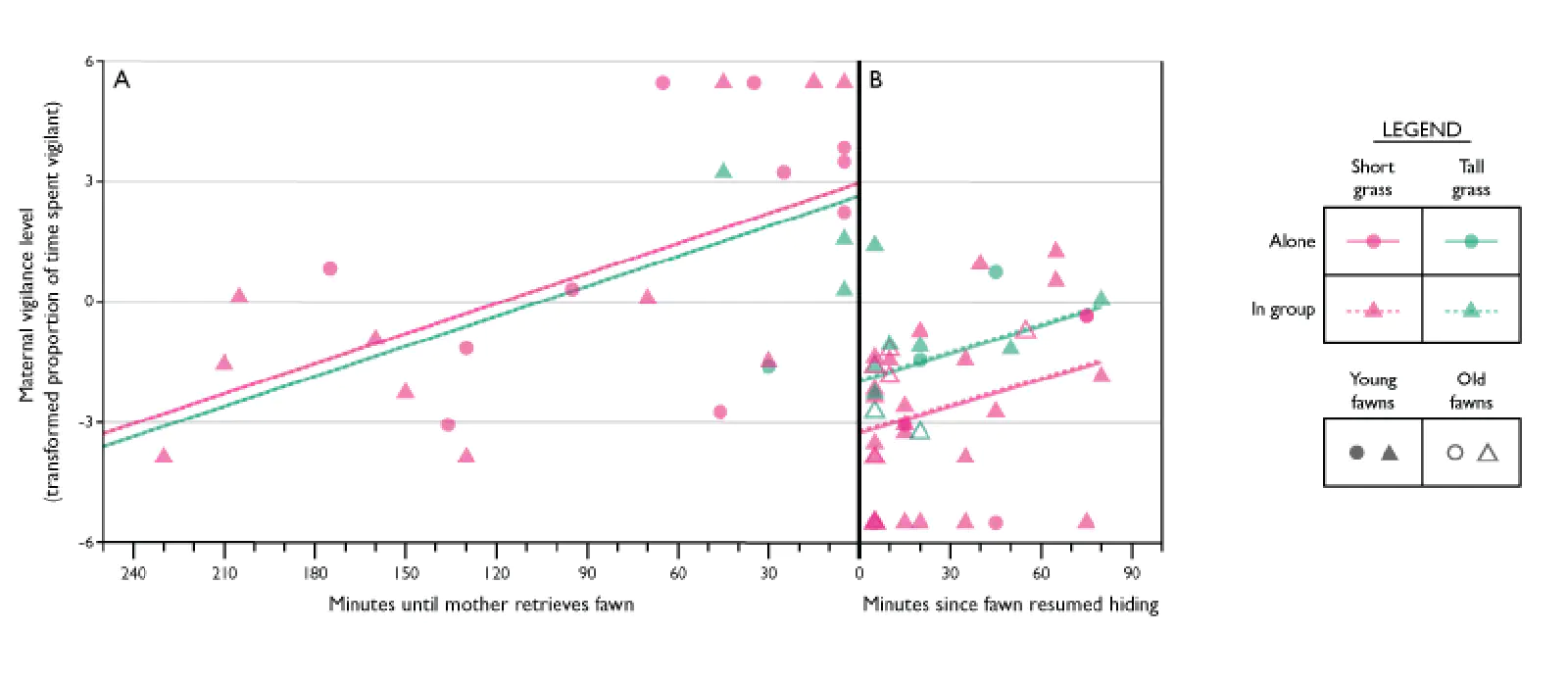Maternal Vigilance Behavior Changes According to Fawn Risk

Vigilance behavior is an important means by which gazelles reduce their predation risk. More vigilant animals are more likely to detect predators while they are still far away, giving the prey a better chance of escaping. However, for many animals vigilance comes at a cost. For gazelle and other grazing ungulates, there is a trade-off between vigilance and grazing: when the animal’s head is down in the grass, it doesn’t have a very good view of its surroundings. But if a gazelle keeps its head up all the time it will starve. So gazelle and other prey animals have to decide when to be vigilant and when to focus on foraging.
The Risk Allocation Hypothesis (Lima & Bednekoff 1999) proposes that animals should be more vigilant when risk is high and less vigilant when risk is low. But for animals to follow this strategy, they must know when they are at high or low risk. Their ability to achieve the optimal vigilance strategy will depend on their ability to accurately assess their current risk level. We know that animals tend to increase their vigilance when they are in risky situations, such as when they are in dangerous habitats or there is evidence that predators may be nearby. They also respond with intense vigilance (and escape behavior) when they actually detect predators. But how do animals know when they aren’t at risk? It can be hard to tell because predators have lots of adaptations that help them avoid detection.
In this study, we tested whether mother gazelles followed the predictions of the Risk Allocation Hypothesis. We reason that mothers have to manage periods of relatively high and low risk as a result of their fawns' activity patterns. When a fawn is hiding it is relatively safe, and when it is active it is exposed to predators and therefore at high risk. We already showed that mothers were more vigilant during fawn active periods than during hiding periods in our 2015 paper. In this more recent study, we tested two further predictions:
- We predicted that mothers become very vigilant just before they retrieve their fawns from hiding. This is a very risky time for the fawn, as the mother is approaching the hiding spot and exposing the fawn’s location to any predators that might be watching.
- We predicted that mothers would exhibit very low levels of vigilance immediately after the fawn goes back into hiding. I noticed during my fieldwork that jackals and other predators attack fawns as soon as they see them, without waiting for the mother to leave. We therefore reasoned that if the fawn’s active period comes and goes without any predator attacks, then there are almost certainly no predators around and the true risk level is very low. If mothers use this information, we would expect to see very low vigilance levels right after the fawn resumes hiding, with vigilance increasing over time as this information becomes outdated.
Both of our predictions were confirmed, suggesting that mothers can effectively tailor their vigilance behavior to match current levels of predation risk to themselves and their fawn. The idea that mothers adjust their vigilance behavior in response to conditions of low risk is particularly interesting. This behavior, known as predator sampling, has only been reported in a few species of birds and fish based on experimental studies.

Publications: Roberts BA and Rubenstein DI. 2018. Temporal structuring of vigilance behaviour by female Thomson’s gazelles with hidden fawns. Animal Behaviour 145: 87-97. PDF